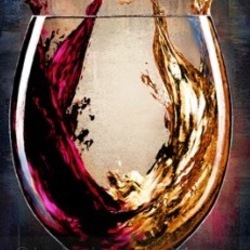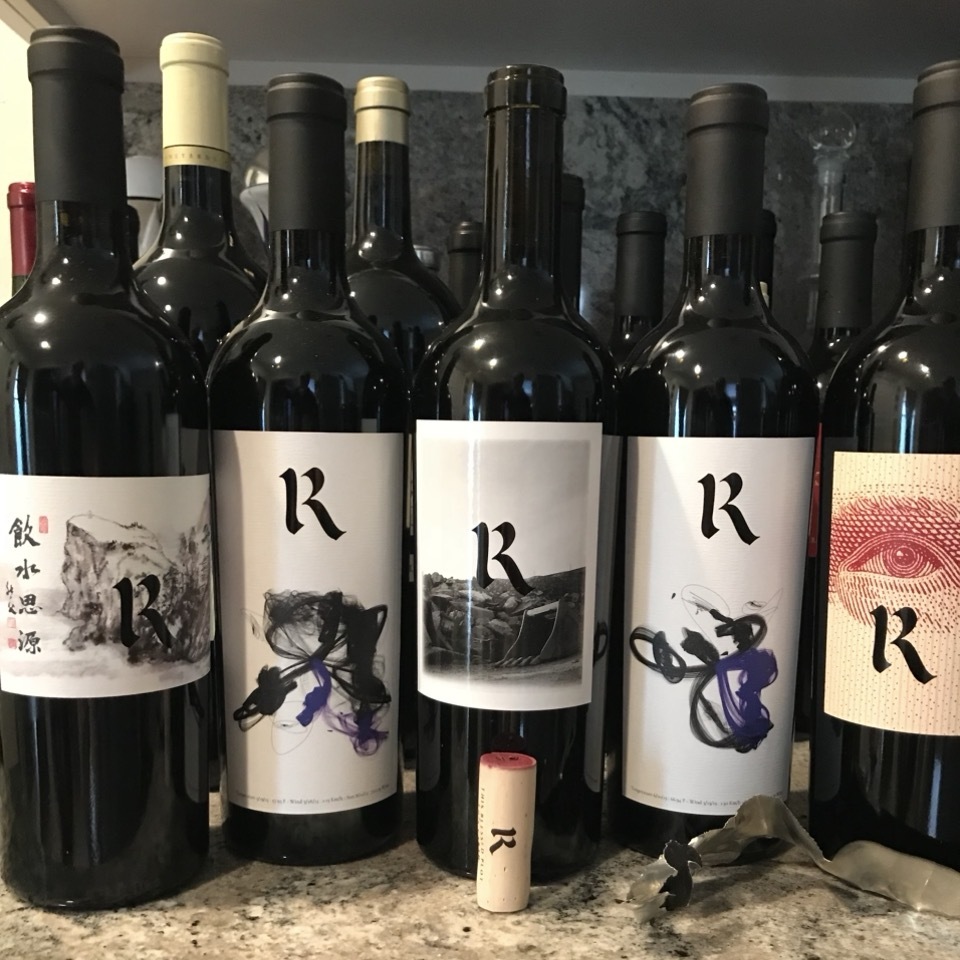Shady Oak Barrel House
Château Canon
Saint-Émilion Red Bordeaux Blend 1986


Wildflower
Gold Australia Wild Ale
Blend 3. Winey ale's very tasty. Producer's notes are pretty spot on imo, even the [reductive?] funk when first opened.
From Wildflower's website:
Gold is a blended, barrel aged Australian Wild Ale. Blend #3 is a blend of two barrels, 1726 and NoSai. The beer in 1726 was brewed on 27 February 2017 and racked into the barrel on the last day of that month. At blending, this barrel was showing great signs of both our house culture and a fresh example of Gold. It had a subtle acidity while still displaying fresh lime and citrus characteristics. NoSai, the sister of sponsai in Blend #1, was brewed clean and remained intentionally uninfected for the majority of its life. Alone, the beer was quite oaky with a lengthy body from the raw wheat and extended maturation in oak. The intention for this blend was to bring some fresher characteristics to Gold like stone fruit, lime, grapefruit and lemon. Ongoing, this is really what we would like to see; however, the blended beer still has great notes of barrel character with a long mouthfeel and oak.
The base beer is brewed entirely with New South Wales cereals: Single Origin (S.O.) Moree, NSW grown Gairdner ale malt and North Star, NSW grown Spitfire S.O. raw wheat thanks to Provenance Malt, and Riverina grown Janz S.O. raw wheat from Voyager Craft Malt. It is made with filtered Sydney water and Motueka (NZ) and Saaz (CZ) hops. Finally, it was fermented with our house culture: brewers yeast, foraged wild yeast and naturally occurring souring bacteria native to New South Wales. It was bottled on May 4 2017 and naturally conditioned through refermentation for 4 weeks. At bottling it was 5.0% ABV, 25 IBU and 0.8°P (FG= 1.003 SG). — 8 years ago
ZD Wines
Napa Valley Cabernet Sauvignon 2012
WOW!!!!!!!! Okay, as you probably know, Im not shy about giving a perfect score. If I could change one thing, the initial palate is a tad sweet. But Holy Stars!!!!!!!
The cork is so perfectly preserved its unbelievable. It looks like a one year old wine cork. The bouquet is pure oak and cedar with remnants of charcoal. Talk about barrel aged! The color is dark dark dark midnight purple. The legs are long and thick lasting a full 12 seconds. Now after decanting for 5 min the sweet beginning is gone. It is now perfect! This is my new favorite wine! The initial palate is blackberry currant and spice. The beginning of the finish is black pepper. The finish is milk chocolate and very buttery which dissipates very fast and leaves you grasping the stem for another indulgence.
I will keep this in my cellar as my house wine for serious wine lovers such as myself! — 10 years ago
Louis M. Martini
Napa Valley Cabernet Sauvignon 2012
Love it! Just my kind of wine- clean, woody, pepper on the nose which is mimicked on the palate. It's like I just licked an old oak wine barrel! Why I do I like these flavor profiles? Maybe because the aromas remind me of my grandparents house growing up- they always had a musty/woody scent...or that they transport me to a rustic cabin in the mountains! It's amazing how aromas can trigger certain things in your brain! — 8 years ago
Almanac Beer Company
Beer is Agriculture Barrel Aged
Farm House Ale aged in oak barrels with Tangerines and Oranges and Dry Hopped with Citra — 9 years ago









Somm David T
Independent Sommelier/Wine Educator
We were suppose to be in Napa this weekend. Sadly, no one should be in Napa/Sonoma except Firefighters and first responders. However in lieu of; the Sodhani party, appointments at Beau Vinge, Mark Herold & a steak at Cole’s Chop House, what the next best thing? #STEAKANDCLARETNIGHT at home in the backyard. This 86 was amazing with my ribeye. The kind of pleasure that causes great pause and rolls the eyes a bit. On the nose; menthol, eucalyptus, dry herbs, soft ripe blackberries, dark cherries, strawberries, baked plum, perfectly stated baking spices, stones, soft unstated spice, clay, rich dark earth, touch of black cherry cola and fresh & dark florals. The palate is heaven as it coats. The body medium full, layered and the tannins are nicely resolved but not completely...still a fair amount of life in this bottle. I’d say it’s still around it’s peak. The fruits are ripe and still fresh. Blackberries, baked plum, dark cherries, strawberries, dry cranberries, hues of blueberries, black cherry cola, sweet darker spice, vanilla, clove, nutmeg, cinnamon, dark rich earth, dry stones, tobacco, suede leather, dry clay, menthol, eucalyptus, touch of dry herbs, fresh & dry dark flowers, beautiful, round acidity, perfect 12.5% alcohol and a long, even, elegantly balanced with beautiful structure, tension & length that’s lasts two minutes. It’s in a really excellent spot. 9.6 with the ribeye and 9.4 on it’s own. Photos of; an aerial shot of Chateau Canon, owners Alain and Gerard Wertheimer who made their first big money on Chanel, own Rauzan-Segla and are worth just under a paltry 10 billion, their barrel room and their Saint-Emilion vineyard. Producer notes and history...Chateau Canon is a premier cru with a history of fine vintages. This Saint-Emilion property has long been recognised as one of the best in the appellation. It is believed that Canon was named after Jacques Kanon, the naval officer who bought estate in 1760. He built the château here and surrounded it with plantings solely of vines...a rare agricultural practice at the time. However, he then sold the estate to a Bordeaux négociant just ten years later. In 1919 it was purchased by the Fournier family, who owned the property until 1996. When they sold it to the Wertheimer family, owners of Chanel and of Rauzan-Ségla in Margaux it unfortunately had some serious problems. The cellars were contaminated with TCA, the chemical compound which causes cork taint. Many of the vines were infected by viruses and in need of being replaced. As well, part of the vineyard above the quarried cellars had subsided. Fortunately the Wertheimers had the money to fix these issues and a manager, John Kolasa with the skills. The first decade of the 21st century saw Canon begin to regain its reputation once John Kolasa retired and Nicolas Audebert at Rauzan-Ségla took over. The substantial estate covers 22 hectares on Saint-Emilion’s famous limestone plateau close to the town. The vines have an average age of 25 years and are generally planted with a southerly or south-westerly exposure. 75% of the vines are Merlot and 25% Cabernet Franc. After the grapes are hand-picked, they are fermented in traditional cone-shaped vats, before spending 18 months ageing in oak barrels, 50% new and 50% used. — 8 years ago